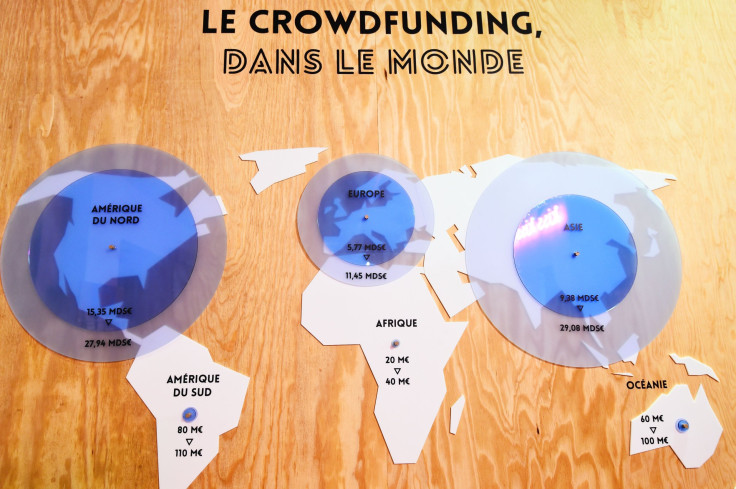Traditional Bank Loans Are Racist, Ageist, Classist, And We Can Do Better

Traditional loans are becoming increasingly irrelevant to modern life. Many of the inherent qualities in bank loans work against, rather than for, their recipients.
Typically, banks pay depositors less than 1 percent in interest, yet lend clients’ deposits out to others via credit cards at up to 25 percent annual interest. As toll collectors, they get to keep over 90 percent of the value of these loans.
Furthermore, many banks make decisions based on racist and ageist criteria. Their loan practices have cemented class disparities across the world and have pried open the gap between the wealthy and those struggling.
Until now, most people have accepted this situation, but alternatives that have more to offer the average consumer are emerging.
The system is racist
Racist loan practices, such as denying fair loans to people of color, have been around for generations, and their damage has compounded over the years as one of the major contributors to systemic racism.
Today, these practices continue. A recent UC Berkeley study found that Black and Latino borrowers pay 5.6 to 8.6 basis points higher interest on housing loans than their White and Asian counterparts. And they pay three points more for refinancing. These loans earn 11-17 percent higher profits off of minority borrowers.
And that’s if minorities can secure loans at all. In Philadelphia, African-Americans are 2.7 times more likely than White applicants to be denied a conventional mortgage. This significant discrimination has been uncovered in at least 48 cities across the nation.
Traditional loans and ageism
A 2018 poll by Nerd Wallet found that 91 percent of surveyed millennials regretted having a credit card. That’s understandable, since experts argue the process of assessing credit scores is obsolete and does not serve millennials.
Most millennials have student loans, and this debt works against them in traditional lending structures. In a world where entry-level job postings require an undergraduate degree, young people have little choice but to pursue higher education, and that comes with a hefty price tag.
For those who don’t qualify for federal loans, private loan companies charge very high interest and take fees for assistance in applying to loan forgiveness programs that are actually free to all.
Student loans drastically limit millennials’ ability to get future loans for further education, large purchases, and housing, because of their “debt-to-income-ratio” - which is critically judged by lenders and results in about 20 percent of millennials being denied loans. CNBC says this calculation severely limits loan potential for anyone making less than $50,000 a year. The average millennial annual salary is about $35,000.
Traditional loans even punish millennials who are cautious about taking on debt, because they have too few credit cards.

Without access to fair loans, millennials resort to predatory ones that hurt their chances of saving. Without being able to purchase a home for themselves, they pay rent instead and are not able to build up equity. Without building up a healthy credit score, they’re barred from access to funds when needed.
Traditional loans prey on the financially desperate
Traditional loan structures are notorious for targeting people in financial trouble.
Bank loans are generally based on credit scores. If you have financial trouble and develop bad credit, your chances nosedive for securing a fair loan in the future.
Furthermore, many people have difficulty even accessing banks. Some 38 percent of U.S. zip codes have no bank in them whatsoever, and a further 21 percent of zip codes have just one bank. What do people do if they’re underserved by banks, whether because of institutional prejudice or physical distance? That’s when they turn to those easy “get cash now” or “payday advance” lending services you see in strip malls, which offer annual percentage rates of up to 400 percent.
We can do this another way
Until now, people have assumed traditional loans were the only option. Alternative lenders often offer terrible terms, counting on customers unable to find a better option.

Crowdfunding and microlending projects like Kickstarter and Kiva are shifting lending to be a community-based endeavor, both offering fairer terms to recipients and giving the community opportunities to invest in people and projects they find promising.
This same principle can be applied to blockchain. Digital currencies offer the opportunity to break free from institutions that take a cut of all transactions and often work against their own customers.
Banks are supposed to serve their customers, not the other way around. The concept of community banks has long been forgotten and replaced by “too big to fail” banks that have perfected the profit machine and have endangered the world economy several times over the past 30 years.
Technology like blockchain can eliminate banks and replace them with institutions that act in the best interest of their clients. What this requires most is that we educate ourselves about the reality of our financial institutions and accept our role in withdrawing from them. It’s time to get wise and take our financial power into our own hands.
Alex Mashinsky is CEO of Celsius Network, a blockchain-based lending platform.
© Copyright IBTimes 2024. All rights reserved.





















